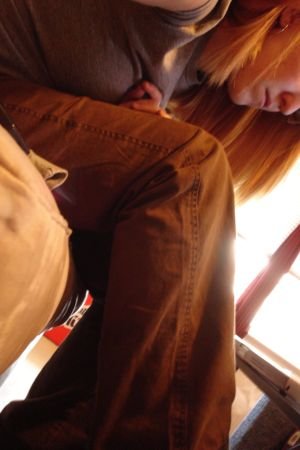Although some artists will say that living in a box and never looking at any other work makes them a better artist, I humbly disagree. Knowing what has been done, by who, and how helps me understand the history of my passion. I don't like every piece of work ever made, that much is certain, but both those I love and dislike inspire me to create. So, for your reading pleasure, a short criticism on one of my favorites.

Like an author's blank page, an artist begins with a blank canvas. Sometimes influenced by dreams, the past, the present or a simple object, the artist works to create an image that conveys an idea to the viewer. Robert ParkeHarrison creates photographs from sculptures, paintings and darkroom techniques that tell stories of a shattered earth and an everyday man's attempts to repair it.
In one image, Da Vinci's Wings, ParkeHarrison is seen standing on an untrimmed tree branch in a plain white shirt and similarly simple black pants. His knees bent and arms sprawled to his sides are each baring the weight of wings constructed of wooden veins and delicate coverings. He is reminiscent of the Wright Brother's hand crafted airplane and a super hero looking stoically towards the sky. Both these elements draw on the industrial and fantastical history of our modern society. The bowl-like helmut on his head reveals that he is man of action; a man with a plan. The land his branch is perched upon is worn with a sense of destruction and disarray as it is merely a pile of rubble.
As ParkeHarrison plays the role of this sole survivor of the broken Earth, his methods of repair seem unreal. His only resources are what man has left on the land; branches of trees, planks of wood, fabric and other remnants. The series this piece belongs to, The Architect's Brother, is filled with the actions of this man born into machine. He is the man that pulls the sod back onto the land as if it were a rug shuffled across the room and he is the man that calls on the birds to lift a fallen friend back to his home. Where the architect has created the framework for society's buildings, his brother is the advocate for the Earth that has been torn by a society of technology, overuse, and consumption. These images become portraits of an inevitable environment.
Through the construction of sets and creating paper negatives collaged together, ParkeHarrison's images are elaborate. The images are photogravures covered in bee's wax, where the encaustic creates a soft atmosphere within the photos calling up the post apocalyptic theme. The gray scale tone adds to the feeling of abandonment and loneliness while the actions of the everyday man leave us hopeful. Not only provocative but relevant to today's societal ways of living, ParkeHarrison begs the viewer to consider the world in relation to the land and what will be the burden of the "architect's brother" when he is the last man standing.
On the agenda: 1. Study more art history 2. Write more

















